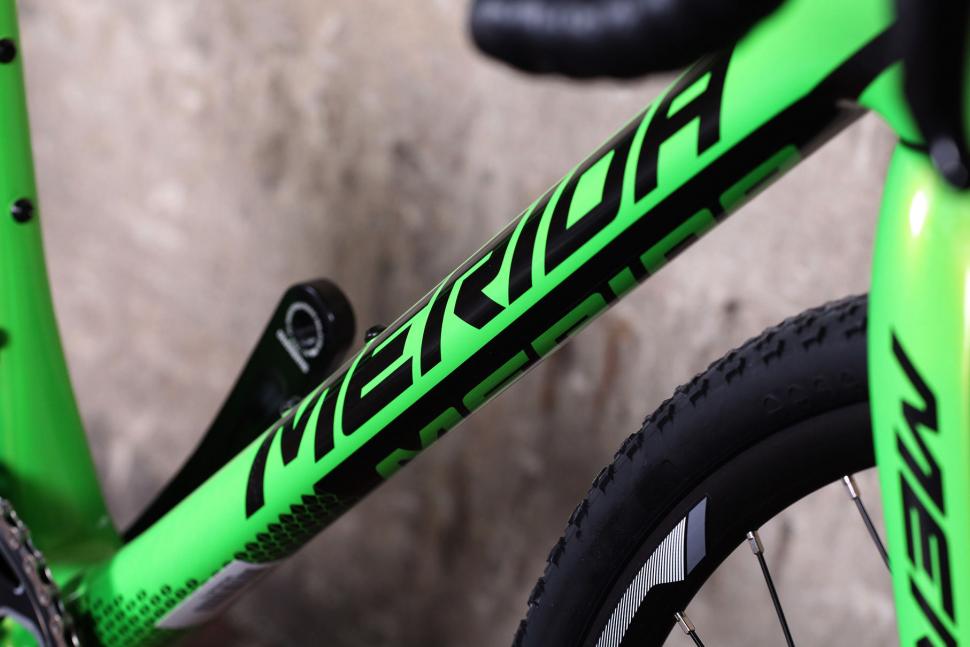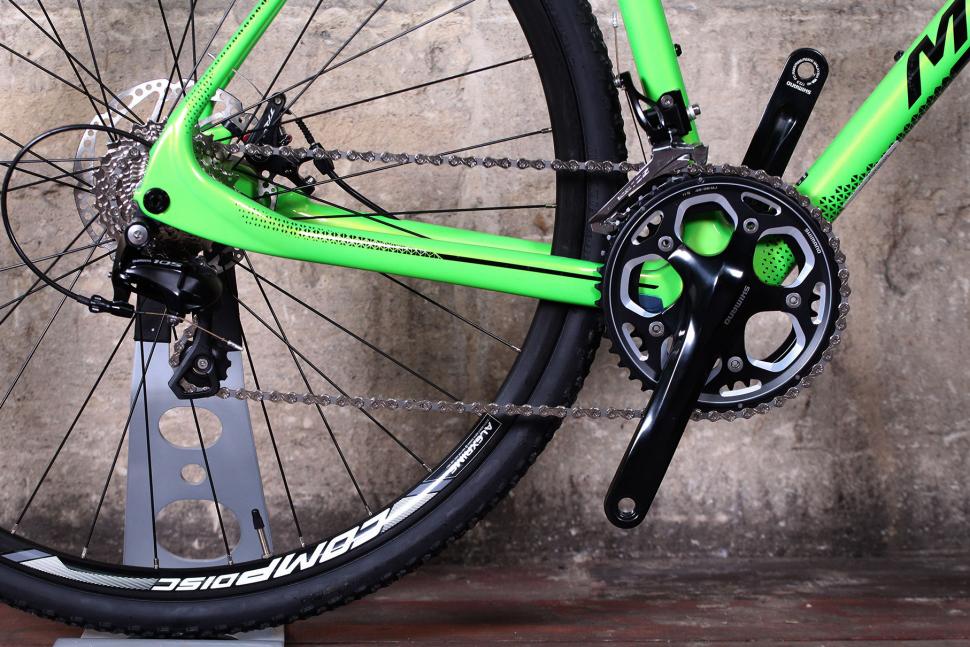- News
- Reviews
- Bikes
- Accessories
- Accessories - misc
- Computer mounts
- Bags
- Bar ends
- Bike bags & cases
- Bottle cages
- Bottles
- Cameras
- Car racks
- Child seats
- Computers
- Glasses
- GPS units
- Helmets
- Lights - front
- Lights - rear
- Lights - sets
- Locks
- Mirrors
- Mudguards
- Racks
- Pumps & CO2 inflators
- Puncture kits
- Reflectives
- Smart watches
- Stands and racks
- Trailers
- Clothing
- Components
- Bar tape & grips
- Bottom brackets
- Brake & gear cables
- Brake & STI levers
- Brake pads & spares
- Brakes
- Cassettes & freewheels
- Chains
- Chainsets & chainrings
- Derailleurs - front
- Derailleurs - rear
- Forks
- Gear levers & shifters
- Groupsets
- Handlebars & extensions
- Headsets
- Hubs
- Inner tubes
- Pedals
- Quick releases & skewers
- Saddles
- Seatposts
- Stems
- Wheels
- Tyres
- Health, fitness and nutrition
- Tools and workshop
- Miscellaneous
- Tubeless valves
- Buyers Guides
- Features
- Forum
- Recommends
- Podcast
TECH NEWS
Just in: Merida Cyclocross 5000, £1,700 carbon fibre 'cross bike with thru-axles and disc brakes
Yes, we know the cyclocross season is over, but there are still plenty of good reasons to use a cyclocross bike outside of the race season, from daily commuting to exploring bridleways and unpaved roads and paths, or even for contemplating one of the new gravel events appearing on the calendar this year.
Merida produce a wide range of cyclocross models at a number of price points to suit most budgets. For £1,700 you can get this full carbon fibre frame, with flex stays to dampen vibrations and carbon dropouts to save weight, with a full complement of thru-axles and a Shimano 105 drivetrain with TRP Spyre mechanical brakes.
The full carbon fork has a tapered steerer tube with internal cable routing and a 15mm thru-axle, to provide extra front-end stiffness. There’s a nod towards comfort with the use of a 27.2mm seatpost.
A mix of Shimano 5800 shifters and mechs with an RS500 46/36 chainset and 11-28 cassette takes care of converting you energy into forward propulsion, while TRP Spyre mechanical disc brakes, with 160mm rotors, are there to moderate your speed.
Merida has fitted additional brake levers to the handlebars, which are useful for accessing the brakes over bumpy ground, when you might not necessarily want to be riding in the drops.
The Formula hubs are thru-axle compatible, 12x142mm rear and 15mm front, and use Shimano’s CentreLock disc rotor mounting standard. The hubs are laced to Merida’s own Comp disc rims with a 22mm depth, and shod with 33mm Maxxis Mud Wrestler tyres. You could easily change the tyres if you wanted to adapt the bike for more road or gravel riding.
Merida, like most bike companies, uses its own-brand equipment for items like the handlebars, stem, seatpost and saddle. The seatpost is carbon fibre while the stem and bar are made from aluminium. The complete bike weighs 9.5kg (20.94lb).
The bike pictured is a 56cm, one of five sizes available, stretching from 47 to 59cm. This bike has a 387mm reach and 574mm stack, 558mm top tube, 1003mm wheelbase, 150mm head tube, 68mm bottom bracket drop and 423mm chainstays. The head angle is 72.5-degrees, the seat angle is 73.5-degrees.
Despite its racing credentials, the frame and fork feature concealed mudguard eyelets so you could boost its practicality for daily commuting if that was on your agenda. You could change the tyres for one of the new breed of fat gravel tyres and use it for a mix of road and off-road cycling though, and if you want to try out one of the many gravel events popping up in the UK this year, but still want a bike you could race in cyclocross come the winter, this could be a good choice.
The Merida Cyclocross 5000 is a big step up from the cheaper Merida Cyclocross 500 we tested last summer. The extra £700 gets you an upgrade from aluminium to carbon fibre for the frame material, which sheds a bit of weight. Both bikes share the same 105/Spyre groupset mix so it’s just a case of deciding how much you want a carbon frame really.
Increasing your budget by £300 would bring the Norco Threshold C Rival 1 that we tested into your sights. Like the Merida, the Norco has a carbon fibre frame and fork with thru-axles at both ends, but the Norco is substantially lighter and has an SRAM Rival 1 groupset complete with powerful hydraulic disc brakes.
More info on the bike can be had at www.merida-bikes.com/en_int/bikes/road-fitness/cx/2016/cyclo-cross-5000-...
David worked on the road.cc tech team from 2012-2020. Previously he was editor of Bikemagic.com and before that staff writer at RCUK. He's a seasoned cyclist of all disciplines, from road to mountain biking, touring to cyclo-cross, he only wishes he had time to ride them all. He's mildly competitive, though he'll never admit it, and is a frequent road racer but is too lazy to do really well. He currently resides in the Cotswolds, and you can now find him over on his own YouTube channel David Arthur - Just Ride Bikes.
Latest Comments
- chrisonabike 35 min 43 sec ago
It's not Brompton themselves though - according to this article? They're just using a supplier who also make other things which end up in...
- chrisonabike 46 min 38 sec ago
That sounds most unfair! They'd been "pro-social" (to drivers) by blocking the footway as well as part of a lane!...
- Rendel Harris 4 hours 18 min ago
I'm afraid that has been a really worrying change over the last few decades: thirty years ago just shouting at a thief to let them know they'd been...
- hawkinspeter 4 hours 48 min ago
I do carry a cheap TPU tube for emergencies, but the Dynaplug is so much quicker and easier than needing to remove wheel/tyre etc. You just get the...
- Rendel Harris 5 hours 27 min ago
March 21st, 1967: birth of Adrian Chiles.
- chrisonabike 6 hours 54 min ago
(This is rather OT now, but...)...
- chrisonabike 7 hours 35 min ago
That's old hand! You really want a hand with integrated display.
- David9694 9 hours 4 min ago
It made a hole and police are looking into it.
- Rome73 11 hours 24 min ago
Yes, I agree. These huge vehicles scare cyclists and discourage cycling. I would not let my children cycle some of the routes I regularly cycle...
- David9694 1 day 2 hours ago
Person trapped after campervan flips in Devon crash...






































Add new comment
3 comments
So why is this a better bike than the (Planet X) Viner super prestige SRAM Force 1 at £1499? The Viner has a carbon frame, same thru axles, better components and is marginally lighter at 8.7kg (claimed weight). You mention what else you can get for an extra £300 if you buy the Norco, but no mention of the fact that you can get a better specced bike if you spend £200 less? Or you can currently get the (Planet X) Tomac Mesa Verde, which is essentially the same spec as the Viner (and may in fact be the same frame) for £1,199. Why would you recommend spending £500 more for the Merida (or £800 more for the Norco)? Am genuinely interested.
Just cause it's carbon doesn't mean it's any good.
I've seen a planet X frame sliced in half to show the manufacturing - it's rubbish! Wall thicknesses varied massively and one of the mould baloons (inflated inside the frame when in the mould to press the carbon out against said mould) was still inside, not to mention the fact that the rivots used to attache dhte cable guides had cracked the downtube (only visible inside).
So, personally, won't touch them or others like them.
The Merida frame will be significantly better than the planet x, however, I happen to have the Merida CX 500 (Alu version, with identical carbon fork as the CX 5000), which I've decked out with RS685 hydraulic brakes and lightened the wheels. Despite the upgrades it came in much less price wise than the CX 5000, and I don't think I could justify the price hike as the CX500 is fantastic to ride.
If it was £1500 I would have to think a little harder.
Well said. Merida manufacturers frames for a lot of brands, only Giant produce more, they're quality.
If only they could inject some colour into their road range, brands need to step away from black, it's so boring and doesn't flatter a lot of bikes.